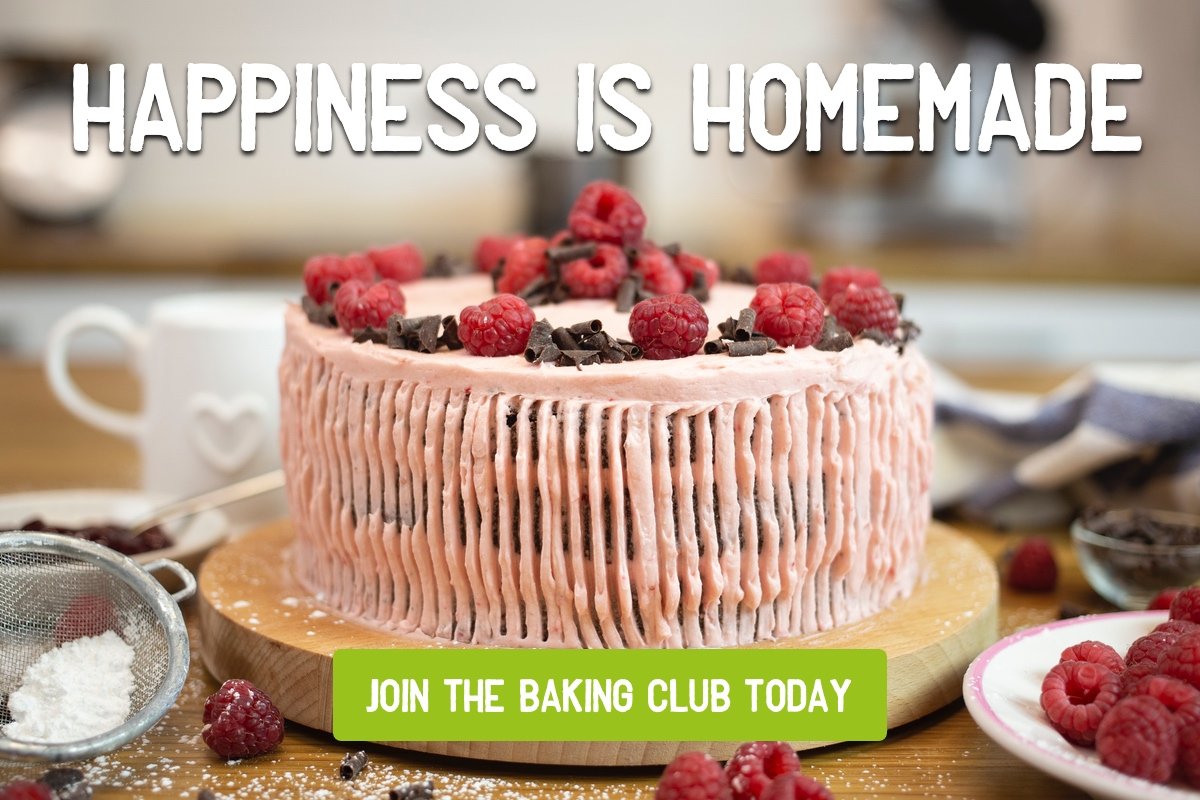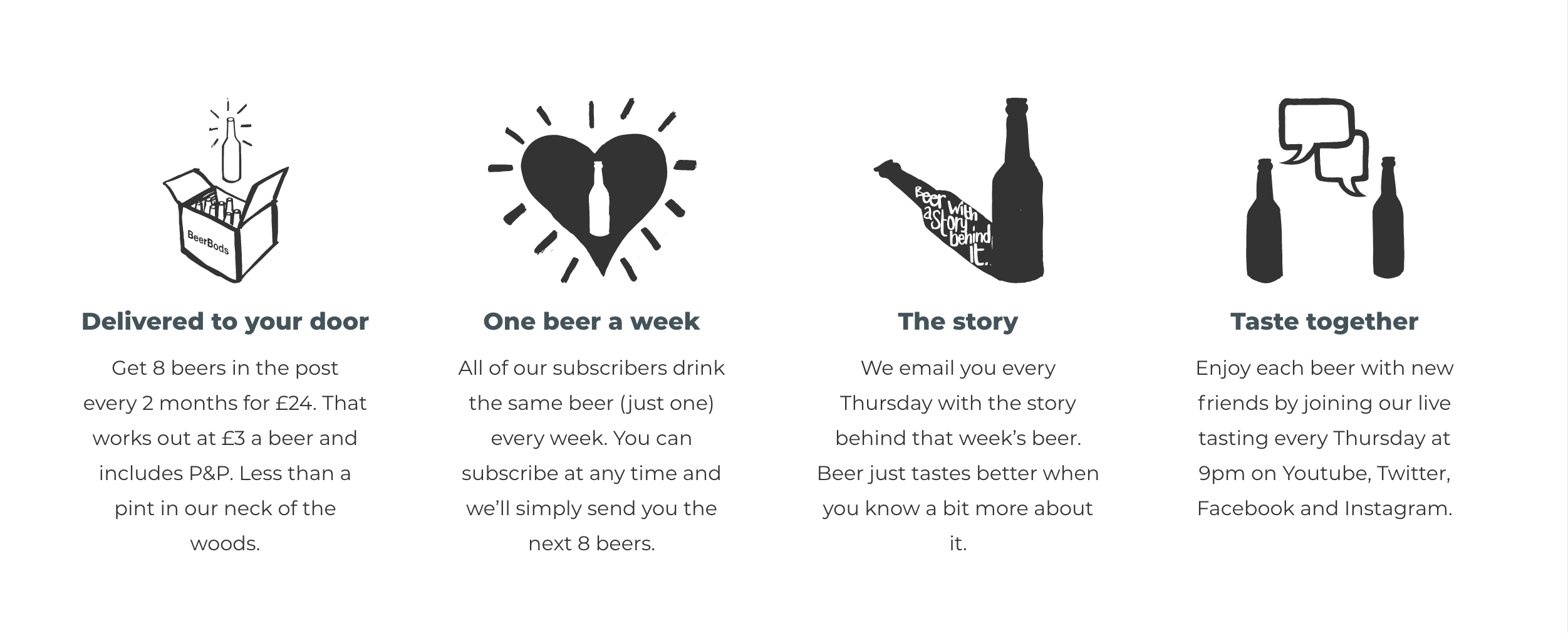Best practices and advice for your subscription business
Retail subscription services are not a new concept. But they're more popular than ever, thanks to continued growth in online retail – accelerated by the global pandemic.
Subscription services for physical goods were big new before the pandemic hit. A 2019 Royal Mail survey found that almost a third (27.4%) of UK consumers were signed up to a subscription box service.
But the pandemic accelerated adoption in many sectors. In April 2020 – the first full month of lockdown in the UK – spending on digital content and subscription services jumped by 50%1. Today, every household in Britain is signed up to an average of seven subscription services2.
This ecommerce niche holds great promise for those who get it right. Before the pandemic, the UK market for subscription boxes was forecast to reach £1 billion by 2022. The true figure is likely to be even higher.
Now, as UK buyers gain more choice over where and when they shop, what does the future hold for subscription businesses? In this climate, how do you ensure sustainable growth from your subscription service?
To answer these questions, we spoke with vendors who are making subscription services work for them across a range of products. Here's what we learnt.
Use storytelling to show the value of your subscription business
Want to persuade people to part with their money, on a regular basis? You need a captivating story. And you need to communicate the value of your service in a way that connects with your audience. Are you solving a problem they have? Are you keeping them entertained? Are you letting them try something new? Or you making their lives easier? If it’s several of these things, so much the better.

Whatever you're trying to sell as a subscription, your proposition needs to be clear and consistent. Check out craft beer subscription service BeerBods for inspiration.
We've always had one simple mission. From when I was holding beer tastings in my shed, to today. That mission is to get more people drinking better beer.
The sales pitch to potential customers is strikingly clear: ‘One beer and the story behind it, every week’. Over at Pact Coffee you’re invited to ‘Wave goodbye to bad coffee days’. Meanwhile, the folks at Bike Club have a mission to get children cycling by making it easier for parents to find the right bike.
A common theme here is curation. Making people’s lives easier in a world where we’re often overwhelmed with choice.
'The amount of choice is making it harder for people to choose. So the job of curator becomes really important', says BeerBods’ Matt Lane.
'Even though they don’t know what they'll receive, our subscribers tell us the number one reason they subscribe is because they trust us to find beers they would never find otherwise'.
For some companies, the ecological aspect is key. Buyers increasingly care about the source of the things they consume. This is a core proposition for fruit and vegetable service Oddbox, where you're invited to ‘Eat good. Do good. Stay odd.’ The first button you see says ‘Start rescuing’. If you've got strong eco credentials, flaunt them.
So you've defined your offering. That's great! But remember you're unlikely to get this 100% right from the start.
'We can presume what people want – and what the product should be', says Alexandra Rico-Lloyd, Chief Operating Officer of the Bike Club. 'But no matter how much work you put into it, you’re never going to get it perfect when you finally do that hard launch.
'Because there’s always going to be something you haven’t thought of. So it’s about having a minimum viable product and being adaptable to change and develop your proposition over time'.
Acquisition tips for your subscription business
The next step is to acquire some paying customers. There's no guaranteed route to success. Especially as one subscription business is different to the next. Some start out as a way to make life easier for friends and relations. Some are conceived as pure-play subscription services. Others are new business models from established retailers.
Don't underestimate how much it costs to acquire customers. And make sure their lifetime value is going to support that position.
Whatever you do, 'Don’t underestimate how much it costs to acquire customers. And make sure their lifetime value is going to support that position', warns Joseph Munns, managing director of Bakedin.
All our experts agree that having an attractive financial offer is vital. Although there’s evidence to show that buyers are sometimes willing to pay a premium for subscription services.
One major decision is introductory offers. And how best to pitch these to avoid bargain hunters. In other words, people who buy a cheap first ‘box’ or two, and then leave. It's important to monitor your churn at different stages. And design (and continually assess) an appropriate retention strategy.
Another key decision is how much choice you give buyers in what they will receive.
At one extreme are businesses like BeerBods where there's no choice. In their case, because the aim is for everyone to try the same new beer every week. Usually at the same time.
'Curation is at the heart of what we do. So if we start letting our customers pick what we send them, it takes away that central tenet', says BeerBods’ Lane. Similarly, at Bakedin, there's only one choice: between bread-based bakes. And non-bread-based bakes. Simple.

But this approach doesn’t work for all schemes. Usually, because of the product on offer. At Pact Coffee, for example, there are choices that allow for things like the different ways subscribers brew their coffee. The strength of coffee they typically drink. Budget.
And at Oddbox, they cater for how much subscribers eat each week. Whether they want fruit or vegetables (or both). Any dislikes and when they’ll be on holiday. After all, you can’t address food waste if you deliver food people can’t (or won't) eat.
There are many ways to promote your service. Too many to go into here. But just because your offer runs online, doesn't mean you shouldn't also consider offline promotions.
If you have bricks-and-mortar retail outlets, consider promoting your subscription service in your stores. 'We’re trialling this at the moment. The subscriptions we promote this way feature products that aren't available in store currently', says Joanne Gray, loyalty and retention manager at Hotel Chocolat. At Bakedin, they also make their subscription products unique. So as not to cannibalise retail sales.
Another best practice is to partner with a like-minded brand with a similar customer profile to yours. 'The return on spend can be far greater when you work with synergy partners. And this can perform really well compared with paid social', notes Ted Charalambides, digital and marketing director at Pact Coffee.
If you avoid looking at attribution as a measure of performance, you're missing a big chunk of what you could achieve.
Influencer marketing is another avenue that some brands are exploring. Charalambides, from Pact Coffee, suggests looking at the 'triggers you can pull on different social media channels to broaden your horizon'. Understanding any seasonality that will affect both acquisition and retention is also important.
Whatever you opt for, keep your campaigns consistent. And focus on where your target customer segments tend to hang out. 'We don’t want our ads to appear too different. So if someone sees us in different places, they instinctively know it’s the Bike Club', says Rico-Lloyd.
Ensure you constantly analyse your numbers over time to understand the customer journey before the last click.
How to grow your subscription business
What's the secret to keeping your subscribers? Part of this is about your optimum price differential – between your initial offer and the ongoing subscription cost. But another key factor on retention is customer experience.
'Retention is a big play for any subscription B2C brand', says Pact Coffee’s Charalambides. 'If we can improve on customer experience, we should retain more customers and reduce churn'. Oddbox’s Co-Founder and CEO Emilie Vanpoperinghe goes so far as to say that 'churn is not a marketing issue, it’s a whole company issue'.
Customer experience obviously includes the product itself. But it also includes the ordering process. The content on your website. Any interface with customer services. The way a product is packaged and delivered. And any community you've built around your subscription service.
As far as the product is concerned, 'the first box experience really impacts retention'. That's according to Oddbox’s Vanpoperinghe. 'Just like when you meet someone new, if you have a good first experience, you’re more likely to forgive them if the second time isn’t quite as good! So we’re putting together a start-up pack for new customers. It will be slightly different to boost that initial experience'.
At the end of the day, an ecommerce store is like a retail store. It needs its windows cleaned. And the storefront changed. With new themes and new items to browse.
The content on your website and in emails also supports retention. Recipes, tips, and videos are valuable on food subscription sites, for example. Oddbox provides seasonal eating and meal planning guides, among other things.
To support its eco credentials, Oddbox developed an impact calculator where customers receive a monthly update on the positive impact they've made. From how much fruit and veg they've rescued, to the CO2 emissions and volume of water they’ve saved.
Your website offers the opportunity to gain more from your subscribers by adding products that complement the ones they receive as part of their subscription.
For primarily retail brands – where the subscription products are produced in relatively small volumes – this provides an opportunity to encourage subscribers to purchase large volume production items too.
Create community around your subscription business
For some brands, community is a central part of their subscription business, from day one. Others move in this direction over time.
The pandemic brought the concept into sharp focus as people turned to online communities when stuck indoors. So how do you actually build community around your brand mission and products?
At BeerBods, the whole subscription concept is built around everyone trying the same beer. At the same time, on the same day. And sharing their experiences online across various social media channels.
During live tastings they get to hear the stories behind the beers they're drinking. 'Our Thursday night tastings are the beating heart of what we do. And the number one reason people subscribe', says BeerBods’ Lane.
'They love the ritual and the social aspect. Building that magic over the long term is hard. But it’s all about creating something they love and want to be a part of long term. But you need to engage with people on their own terms. Why they already are. When we tried to create our own community platform, it didn’t work'.

The concept of sharing an experience on the same day is a core part of the Bakedin subscription service too. But this wasn’t the originally plan. Customers started sharing pictures of their bakes. So Bakedin freezes its social media channels in between the boxes arriving and the monthly ‘reveal’ to create a buzz around that time.
'Organic reach on Facebook can often be insignificant unless you’ve got an insanely big audience. So we set up the group because we knew it would get loads of interaction', says Munns from Bakedin. 'But then we realised it didn’t belong in the background. Now, even though it sometimes gets used by subscribers as a customer service channel, the community generated a huge amount of positivity'.
Allow customers to shape your subscription business
Online communities provide a great way to find out what customers think. So do surveys. 'Customers won’t necessarily tell you exactly what they want. Because they don’t necessarily know. But they can still help you understand your key parameters in terms of box contents, packaging, size, cost and that kind of thing', says Gray from Hotel Chocolat.
Listen to your customers and gather insights.
Rico-Lloyd from the Bike Club has another take on the value of surveys. 'As entrepreneurs, you always have a new fun thing that you think would be amazing for your business. But we always talk to our subscribers first. It helps us to drive the direction of the business. And make sure we stay relevant to our customer base'.
Subscription services are ripe with business opportunities. But they need careful consideration and planning. And then plenty of nurturing and continuous updates along the way.
Ensure you use storytelling to showcase how you're making people’s lives easier. Or more fun!
As Oddbox's Vanpoperinghe puts it: 'Yes, you should make sure your product is functional and amazing. But make sure you then build everything else around that. Emotional engagement is important too'.
Focus on making your product great. But bear in mind that people don't buy just your products. They buy the whole proposition.
Thank you to Commerce Futures and Recharge who collaborated with us on this guide to optimising your subscription business.
1 Barclaycard Payments; June 2020
2 Barclaycard Payments; June 2020; includes digital entertainment and premium delivery services



